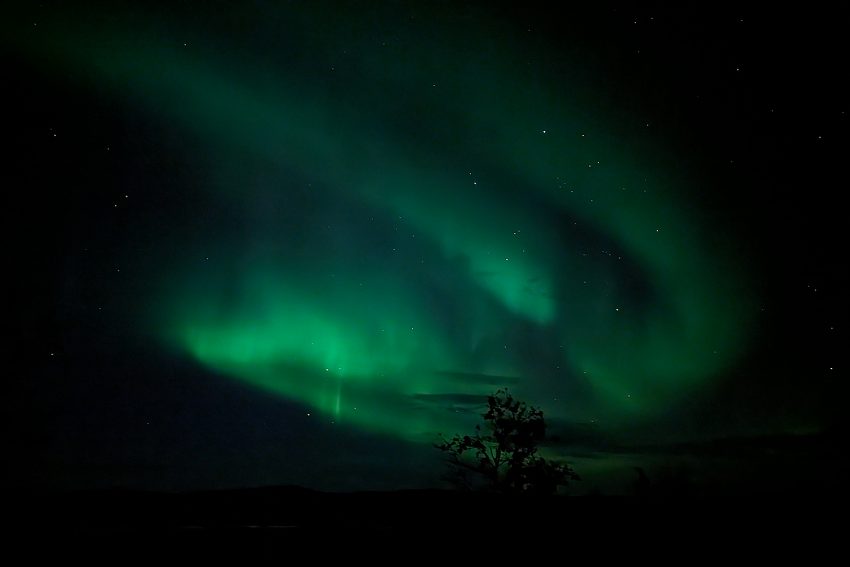Picture of the month: Northern lights in Sweden Natural spectacle during geophysical field campaign in Sweden
A team of researchers from Technische Universität Braunschweig conducted a geophysical study of permafrost bogs in northern Sweden. As well as providing a lot of valuable data, the trip also left some beautiful impressions. Madhuri Sugand, for example, photographed a natural spectacle in the sky – the aurora borealis.

Northern lights in Sweden, captured during a geophysical field campaign in 2023. Photo credit: Madhuri Sugand
On 11 September 2023, researchers from the Institute of Geophysics and Extraterrestrial Physics – Madhuri Sugand, Raphael Schulz, Robin Zywczok and Professor Andreas Hördt – set off for Abisko in northern Sweden to conduct a geophysical study of permafrost peat bogs: The year-round frozen peatlands are part of the subarctic permafrost zone, which is threatened by rising temperatures due to climate change. When they thaw, they can release large amounts of carbon dioxide, exacerbating climate change through feedback effects.
As part of the international research training group TransTip, funded by the German Research Foundation (DFG), a team from Leibniz Universität Hannover analysed how deep the surface thaws in summer, how groundwater and heat are transported and how the thawing process continues from the surface into the depths.
One focus of the geophysical exploration was to determine the ice content of the subsurface – an important parameter for predicting the future development of permafrost regions using numerical simulations. High frequency induced polarisation (HFIP) is used to determine the ice content. The specially developed instrument, nicknamed ‘Chameleon’, has worked well and provided a wealth of data that will be analysed over the coming weeks and months. In addition, an ice core was taken to verify the measurements on site – a strenuous and exciting undertaking.
The group also enjoyed a special ‘highlight’ in two senses of the word: On several evenings, the northern lights were visible, their spectacular shapes providing a little compensation for many cold working days.
